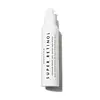What's inside
What's inside
 Key Ingredients
Key Ingredients

 Benefits
Benefits

 Concerns
Concerns

 Ingredients Side-by-side
Ingredients Side-by-side

Water
Skin ConditioningCaprylic/Capric Triglyceride
MaskingOleyl Erucate
EmollientGlycerin
HumectantTriheptanoin
Skin ConditioningCetearyl Olivate
Sorbitan Olivate
EmulsifyingCyclodextrin
AbsorbentHydroxyethyl Acrylate/Sodium Acryloyldimethyl Taurate Copolymer
Emulsion StabilisingBiosaccharide Gum-1
HumectantAllantoin
Skin ConditioningRetinal
Skin ConditioningRubus Chamaemorus Seed Oil
Skin ConditioningPanthenol
Skin ConditioningCitric Acid
BufferingTocopheryl Acetate
AntioxidantDisodium EDTA
Pentylene Glycol
Skin ConditioningLonicera Japonica Flower Extract
Skin ConditioningLonicera Caprifolium Flower Extract
PerfumingEthylhexylglycerin
Skin ConditioningPhenoxyethanol
PreservativeWater, Caprylic/Capric Triglyceride, Oleyl Erucate, Glycerin, Triheptanoin, Cetearyl Olivate, Sorbitan Olivate, Cyclodextrin, Hydroxyethyl Acrylate/Sodium Acryloyldimethyl Taurate Copolymer, Biosaccharide Gum-1, Allantoin, Retinal, Rubus Chamaemorus Seed Oil, Panthenol, Citric Acid, Tocopheryl Acetate, Disodium EDTA, Pentylene Glycol, Lonicera Japonica Flower Extract, Lonicera Caprifolium Flower Extract, Ethylhexylglycerin, Phenoxyethanol
Water
Skin ConditioningDimethicone
EmollientGlycerin
HumectantButylene Glycol
HumectantDipentaerythrityl Hexacaprylate/Hexacaprate
EmulsifyingDimethicone/Vinyl Dimethicone Crosspolymer
Skin ConditioningHydroxyethyl Acrylate/Sodium Acryloyldimethyl Taurate Copolymer
Emulsion StabilisingGlycine Soja Oil
EmollientLauroyl Lysine
Skin ConditioningPEG-8
HumectantPhenoxyethanol
PreservativeSqualane
EmollientGlycine Soja Seed Extract
Skin ConditioningPolysorbate 60
EmulsifyingAcrylates/C10-30 Alkyl Acrylate Crosspolymer
Emulsion StabilisingCaprylyl Glycol
EmollientPolyurethane Crosspolymer-1
Chlorphenesin
AntimicrobialPolysorbate 20
EmulsifyingSodium Hydroxide
BufferingDisodium EDTA
Lactic Acid
BufferingRetinol
Skin ConditioningOlive Glycerides
EmulsifyingSorbitan Isostearate
EmulsifyingCeramide NP
Skin ConditioningSodium Hyaluronate
HumectantPhenethyl Alcohol
MaskingGlyceryl Caprylate
EmollientPhenylpropanol
MaskingOpuntia Ficus-Indica Stem Extract
Skin ConditioningOpuntia Ficus-Indica Callus Culture Extract
AntioxidantWater, Dimethicone, Glycerin, Butylene Glycol, Dipentaerythrityl Hexacaprylate/Hexacaprate, Dimethicone/Vinyl Dimethicone Crosspolymer, Hydroxyethyl Acrylate/Sodium Acryloyldimethyl Taurate Copolymer, Glycine Soja Oil, Lauroyl Lysine, PEG-8, Phenoxyethanol, Squalane, Glycine Soja Seed Extract, Polysorbate 60, Acrylates/C10-30 Alkyl Acrylate Crosspolymer, Caprylyl Glycol, Polyurethane Crosspolymer-1, Chlorphenesin, Polysorbate 20, Sodium Hydroxide, Disodium EDTA, Lactic Acid, Retinol, Olive Glycerides, Sorbitan Isostearate, Ceramide NP, Sodium Hyaluronate, Phenethyl Alcohol, Glyceryl Caprylate, Phenylpropanol, Opuntia Ficus-Indica Stem Extract, Opuntia Ficus-Indica Callus Culture Extract
 Reviews
Reviews

Ingredients Explained
These ingredients are found in both products.
Ingredients higher up in an ingredient list are typically present in a larger amount.
Disodium EDTA plays a role in making products more stable by aiding other preservatives.
It is a chelating agent, meaning it neutralizes metal ions that may be found in a product.
Disodium EDTA is a salt of edetic acid and is found to be safe in cosmetic ingredients.
Learn more about Disodium EDTAGlycerin is already naturally found in your skin. It helps moisturize and protect your skin.
A study from 2016 found glycerin to be more effective as a humectant than AHAs and hyaluronic acid.
As a humectant, it helps the skin stay hydrated by pulling moisture to your skin. The low molecular weight of glycerin allows it to pull moisture into the deeper layers of your skin.
Hydrated skin improves your skin barrier; Your skin barrier helps protect against irritants and bacteria.
Glycerin has also been found to have antimicrobial and antiviral properties. Due to these properties, glycerin is often used in wound and burn treatments.
In cosmetics, glycerin is usually derived from plants such as soybean or palm. However, it can also be sourced from animals, such as tallow or animal fat.
This ingredient is organic, colorless, odorless, and non-toxic.
Glycerin is the name for this ingredient in American English. British English uses Glycerol/Glycerine.
Learn more about GlycerinThis is a synthetic polymer. It helps improve the texture of products by adding thickness and gel-like feel.
It is also an emulsifer, meaning it prevents ingredients such as oil and water from separating. It also helps evenly disperse other ingredients.
Phenoxyethanol is a preservative that has germicide, antimicrobial, and aromatic properties. Studies show that phenoxyethanol can prevent microbial growth. By itself, it has a scent that is similar to that of a rose.
It's often used in formulations along with Caprylyl Glycol to preserve the shelf life of products.
Water. It's the most common cosmetic ingredient of all. You'll usually see it at the top of ingredient lists, meaning that it makes up the largest part of the product.
So why is it so popular? Water most often acts as a solvent - this means that it helps dissolve other ingredients into the formulation.
You'll also recognize water as that liquid we all need to stay alive. If you see this, drink a glass of water. Stay hydrated!
Learn more about Water